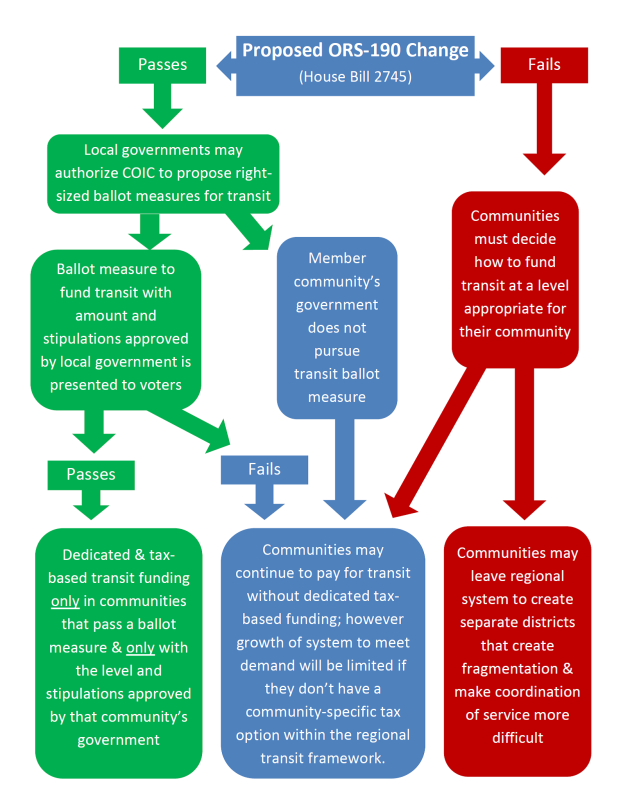Legislative Concept 2017
In the 2017 legislative session, Central Oregon Intergovernmental Council (COIC) which currently operates Cascades East Transit (CET) is asking the Oregon legislature to give COIC the authority to ask voters for permanent or local option levies in communities where the local government is interested in developing dedicated transit funding for bus service. COIC can currently go to voters for bonds for capital expenses, but not levies for operating expenses. Voters will decide whether their areas should fund a bus system.
LOCAL CONTROL
- Before any dedicated, local transit funding is created, it would be supported by the local government and the voters.
- Different communities can propose different rates, to tailor the local investment and service level to the community’s needs and priorities. Each City can choose the appropriate funding tools for transit, including but not limited to property taxes.
MAXIMIZES EFFICIENCY
- It retains a coordinated transit system under an existing organization. It prevents
fragmented transit districts from forming. This minimizes costs and optimizes streamlined and convenient service.
- It retains the most efficient management system for a regional transit system that will use federal and state resources equitably and protect local agencies from competing for limited federal and state resources.
PROTECTS LOCAL GOVERNMENTS’ BUDGETS AND CORE SERVICE FUNDING
- It protects local governments’ property tax funded budgets from funding conflicts. Local jurisdictions can decide when it’s the right time to ask voters for transit funding, so it does not conflict with funding needs for higher-prioritized
services.
- It allows municipalities to focus on core services and tailor transit specifically to each
community’s needs.
ECONOMIC DEVELOPMENT
- Companies in this region are growing and are struggling to attract workers. A regional bus system reduces transportation costs and can make life more affordable for employees.
- Our area’s economy is still dependent on the service industry. Having options to ride a bus would help make the area affordable for key employers.
- Nationally, the lowest segments of wage earners spend 36.6% to 40.4% of their income on housing and 14.5% to 16.9% on transportation. (US Bureau of Labor Statistics, August 2016)
- Transit users can save by taking transit rather than owning a vehicle. Amenitized communities are better at attracting workers. Transit and transportation options are
considered amenities.

